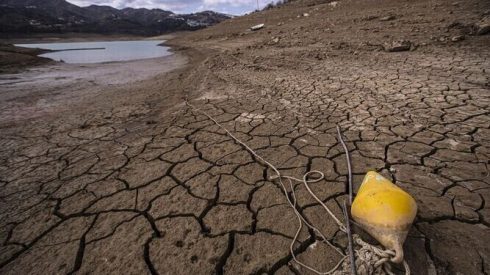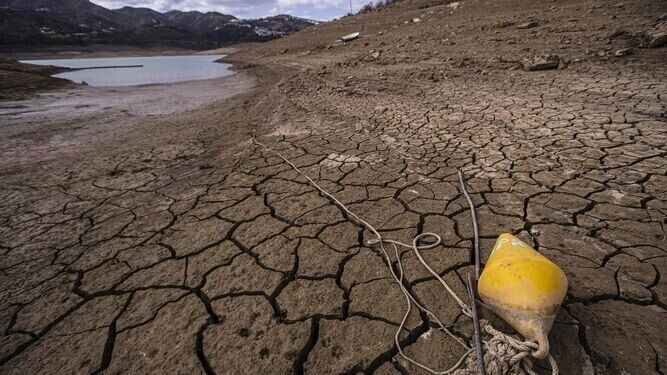ALARM bells are being rung once again over the state of the Viñuela reservoir, the largest in Malaga, as its levels drop to just 8%.
Currently, the reservoir holds just twelve cubic hectometres of water, a grim situation that in just a matter of months could see the region with almost no water for its residents.
The warning comes from Gregorio Campos, Vice President of Axaragua, the public water company responsible for the area, and also the Mayor of Iznate.
The only hope of a turnaround, he says, lies in a rainy autumn, as predicted by some meteorological models and eagerly anticipated by local municipalities.
Despite a barely noticeable rise of 0.02 hectometres after weekend rainfall, Campos is optimistic about the upcoming season.
Aemet predicts a ‘rainy autumn’ after the Mediterranean’s temperature increased this summer, he claimed.
Around 220,000 inhabitants across 14 municipalities in Malaga are feeling the brunt of the ‘persistent drought’ which has lingered for five whole years.

It has led to water supply cuts and severe damage to crops, many of which are subtropical, impacting the livelihoods of local farmers who have not seen a drop of water for fifteen months.
“The situation has worsened day by day, and it’s quite challenging,” Campos said.
“Besides having a small quantity of water, we also face water quality issues due to nitrate residues, heavy and non-heavy metals from the environment, and the fact that what remains is essentially ‘mud’ due to the low water level in the reservoir.”
However, Campos reassured people that the water supplied to the Axarquía residents is of good quality, although treating this water is now ‘more expensive’ due to these circumstances.
To overcome the lack of water, the Mancomunidad de Municipios Costa del Sol Axarquía is currently receiving support from the regional government.
Up to 300 litres per second are sourced from the Malaga-based company Emasa, and 80 to 100 litres are drawn from the Chillar River in Nerja to cover 70% of the water supply.
Moreover, many municipalities have put in place emergency measures this summer to reduce water consumption, such as suspending irrigation, using potable water for street cleaning, shutting off beach showers, and launching citizen awareness campaigns.
If the drought persists in a sixth year, authorities may need to explore ‘other resources’ for the long term, such as desalinating Mediterranean seawater.
“This option would be a last resort due to its complexity, cost, and technical challenges, but there would be no other choice because everyone relies on water: the population, agriculture, and even the tourism sector. Everything depends on this resource,” Campos said.
READ MORE:
- Cracking up: A look back to Spain’s worst drought in 30 years
- More than 1.5 million people in Malaga are living with water restrictions as the province suffers from the drought.
- Spain’s Doñana National Park marks 54th anniversary amid challenges of drought and proposed irrigation measures
Click here to read more Environment News from The Olive Press.








